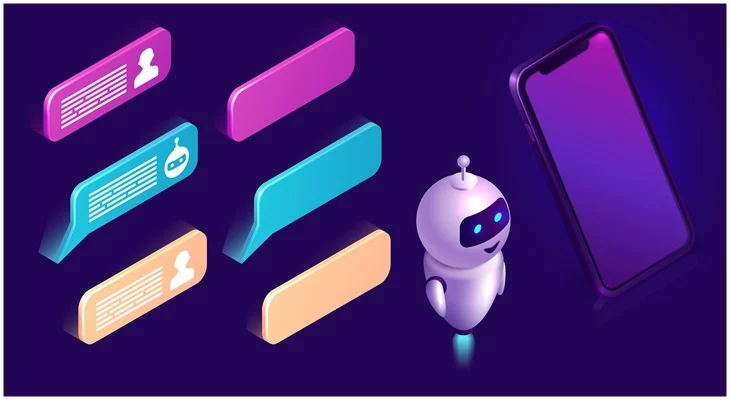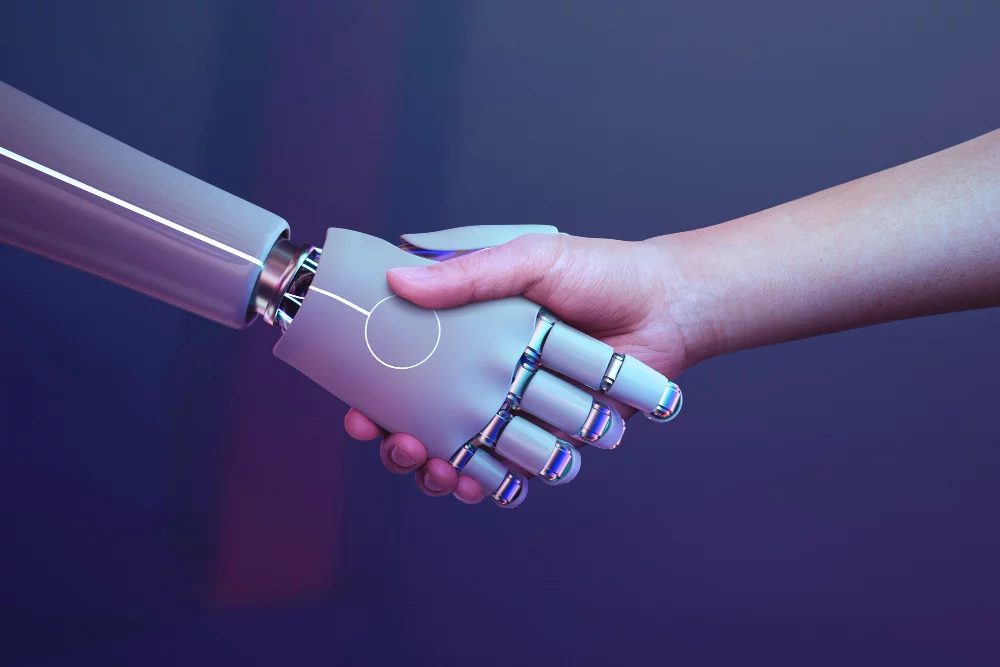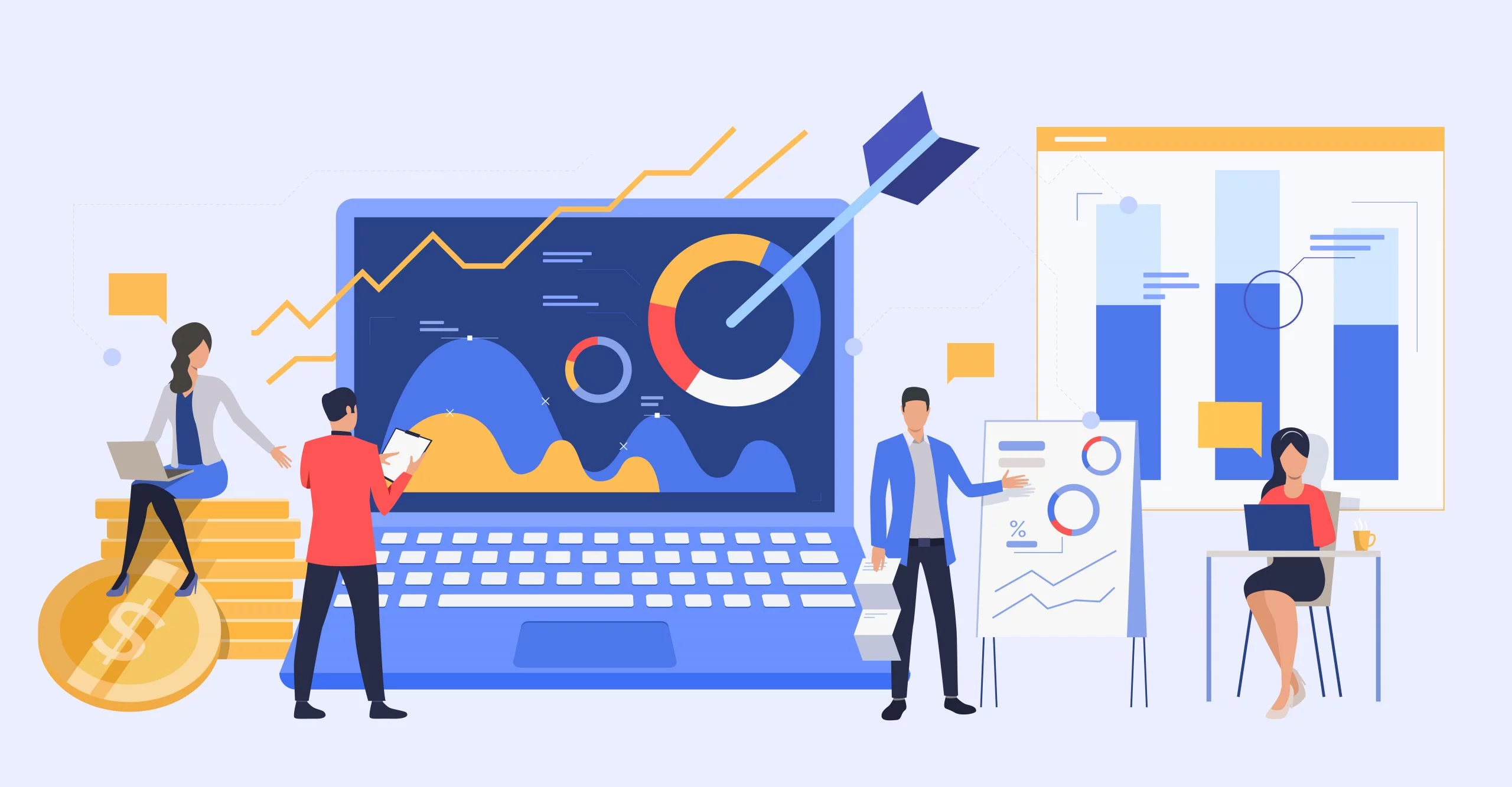What Is AI As A Service?
Artificial Intelligence as a Service refers to out-of-the-box AI tools. They enable organizations to install and scale AI techniques at a fraction of the cost.
This concept of everything as a service refers to any software. These softwares are easy to access. They can also be easily accessed over a network because they rely on cloud computing. In most cases, the software is available on the market. You can also use it almost immediately with a few tweaks, even when not customized to your system.
Cloud services have become accessible. With it, AI has become more accessible. Companies can collect and store endless data. This is where AI-as-a-service comes into play.
Artificial Intelligence as a Service (AIaaS) is an outsourceable third-party offering for AI. AI as a Service also enables individuals and companies to experiment with AI for various purposes. It also does not need large upfront investments and has less risk. Through experiments, we can sample many public cloud platforms. This helps in testing different machine learning algorithms.
In this blog, we will understand what is AI as a service and we'll look at some advantages, challenges, and use cases.
Key Architectural Components
AI Infrastructure
The AI infrastructure supports underlying AI and ML models. Data and computation are the two pillars of these models.
AI Data
When applying large amounts of data to statistical algorithms, AI data is a functional model of ML. These models also function to learn from patterns in existing data. A large amount of data determines the percentage accuracy of the predictions. For example, many doctor's letters train deep learning networks. It also helps them evolve and detect medical emergencies, cancer, or tumors.
AI Computing
AI Computing services include virtual machines, serverless computing, and batch processing. These calculation methods help to improve parallel processing and automate ML tasks. For example, Apache Spark is a real-time data processing engine with a scalable ML library. Data used in virtual machines and containers to perform calculations help to train ML models.
Artificial Intelligence Services
Public cloud providers provide APIs and services. These services are also available and do not need custom ML models for consumption. These APIs and services profit from the underlying infrastructure owned by the cloud provider.
Cognitive Computing
Cognitive Computing APIs include speech, text analysis, language translation, and search. Developers access these services as REST endpoints. They also integrate them into applications with a single API call.
Custom Computing
APIs serve their purpose in general cases. Cloud providers are also moving to custom computing. Thus they are allowing users to experience cognitive computing with custom datasets. Users' data is used to train cognitive services in this case. Also, the customized approach reduces the time and effort required to select the appropriate algorithms. It also reduces the effort of training the custom models.
Conversational AI
The world is becoming familiar with virtual assistants as end-users embrace AI. Thus, cloud providers help developers to integrate bots across platforms by using bot services. Web and mobile developers also add digital assistants to their applications with this service.
AI Tools
In addition to APIs and infrastructure, cloud providers offer different tools. These tools help data scientists and developers. The tools also encourage the use of virtual machines, storage, and databases. They also synchronize with computing and data platforms.
Wizards
Wizards are available to amateur data scientists. They help to reduce the complexity of training ML models. At the backend, these tools act as a multi-tenant development environment.
Integrated Development Environment (IDE)
Savvy cloud providers are making significant investments in IDEs and portables. These IDEs help simplify the testing of machine learning models.
Data Preparation Tools
The performance of ML models also depends heavily on the quality of the data. To ensure the most efficiency of ML models, public cloud providers provide data preparation tools. These tools can also perform extract, transform, and load (ETL) work. These ETL jobs are then fed into the ML pipeline for training and assessment purposes.
Frameworks
Cloud providers offer out-of-the-box VM templates. For this, they use frameworks like TensorFlow, Apache MXNet, and Torch. This is because setting up, installing, and configuring the data science environment becomes complicated.
Such VMs train complex neural networks and ML models as is. GPU-assisted entities. Public cloud providers are also making extensive use of AI. It helps to attract more customers to their platforms. AIaaS could be a game-changer in the context of computing and data services in the years to come.
Benefits of AIaaS
Successful AI and ML need many parallel machines and fast GPUs. Before AIaaS, companies chose too much for initial investment and ongoing maintenance. AIaaS also allows businesses to leverage the power of machine learning at a significantly lower cost. This means you can keep working on your core business. It also eliminates the need for training and spending in areas that partially support decision-making.
Advanced Infrastructure at a Low Cost
Flexibility
Aside from lower costs, AIaaS pay for what you use has a high level of transparency. Machine learning also requires a lot of processing power to run. But, you might only need that much power and not need AI running non-stop.
Ease of Use
Although many AI options are open source, they are not always easy to use. In service offerings, especially ML offerings, many consider a black box. You know the input and the output. But still, you don't understand the inner workings.
These workings can be such as which algorithms are used, whether, and which get updated. Which versions apply to which dates. This can also cause confusion or misunderstandings about the stability of your data/output.
Scalability
You can start with smaller projects with AIaaS. It helps you to understand if it would be a good fit for you. It also gives you an understanding of your particular requirements. You can also fine-tune your service and scale up or down as project demands change as you gain experience with your own data.
Challenges Associated with AIaaS
Reduced Security
AI and machine learning require massive amounts of data. For this, your business must share that data with third-party vendors. To prevent data from being improperly accessed, shared, or tampered with, data storage, access, and transit to servers must be secured.
Reliance
Because you're collaborating with one or more third parties, you're counting on them to provide you with the information you require. This isn't a problem in and of itself, but it can cause lag time or other issues if any problems arise.
Reduction in Transparency
You purchase the service but not the access in AIaaS. Some people compare service offerings, especially those in machine learning (ML), to a black box. You are aware of the input and output. However, you are unaware of the inner workings, such as which algorithms are being used, whether the algorithms are being updated, and which versions apply to which data. This may also cause confusion or miscommunication about the stability of your data or output.
Data Governance
Certain industries may limit whether or how data can be stored in a cloud. This together can also prevent your organization from leveraging certain types of AIaaS.
Long-Term Costs
The costs can add up with any “as-a-service” offering, and AIaaS is no exception. As you delve deeper into AI and machine learning, you may be looking for more complex offerings. These offerings can also cost more and need you to hire and train staff with more specific expertise. But, as with anything, the cost can also be a good investment for your business.
Use Cases Of Artificial Intelligence as a Service
Image Recognition
Image recognition systems analyze images to identify places, people, and objects and draw conclusions from them. These AI-powered systems are used by Duos Technology to automate the inspection of trains as they travel down tracks.
Recommendation Engines
These engines suggest the most relevant items to a specific customer based on patterns and preferences. That is the case at Taboola, which is constantly training its AI models to deliver massively scaled content recommendations. It also makes the appropriate recommendation. 30 billion times per day across 4 billion web pages, with up to 150,000 requests per second processed.
Natural Language Processing
NLP systems use computer-generated speech and text. They interact with customers in real-time. Converge Technology Solutions assisted an international development bank. It implements AI-driven NLP systems to overcome communication barriers in an organization. It spans 29 locations across the Americas and four languages.
Detection of Fraud
AI system detects unauthorized financial activity and prevents fraud. MasterCard best demonstrates the capabilities of these AI-driven systems. It examines each transaction using 1.9 million rules. It also processes 165 million transactions per hour using ML algorithms. Everything happens in milliseconds.
Autonomous Vehicles
Autonomous vehicles improve safety. They use technologies that allow them to see, sense, and respond to their surroundings. This is the case with OTTO Motors systems. OTTO Motors digitizes material flow. It does so by leveraging cutting-edge autonomous technology.
Conclusion
As a growing space, AIaaS has many benefits that early adopters are bringing to the table. But its downsides also mean there's plenty of room for improvement.
There are still bumps in the development of AIaaS. But, it is just as important as other "as-a-service" offerings. By removing these services from a few hands, many more organizations will be able to benefit from the power of AI and ML.
You may also like to read:
Understanding AI as a Service Examples Across Industries
How Is Artificial Intelligence Transforming Ecommerce?
Benefits And Challenges of Artificial Intelligence in EyeCare
What Is Machine Learning As A Service: List Of Best MLaaS Platforms
Effect Of Artificial Intelligence As A Service: Service Industry in Focus






